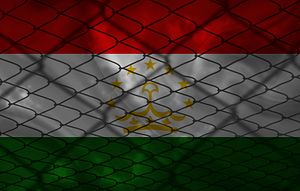After more than a month, internet access was reportedly restored in Tajikistan’s eastern region, Gorno-Badakhshan Autonomous Oblast (GBAO) earlier this week. This blackout period followed an earlier internet shutdown that stretched from November 2021 to March 2022, only to be put back into place on May 17 as ongoing protests intensified and violence erupted.
The genesis of the latest unrest was the November killing of a local man, Gulbiddin Ziyobekov, and ultimately the central Tajik government’s inability to address the concerns of GBAO residents. Ziyobekov’s death sparked protests, which triggered the internet blackout and a new round of crackdowns on Pamiri activists and prominent figures, including Chorshanbe Chorshanbiev, an MMA fighter, and a Pamiri diaspora leader, Amriddin Alovatshoev. Chorshanbiev was deported to Tajikistan after a dubious speeding arrest in December and Alovatshoev was abducted from Moscow in January and turned up in Tajikistan. In March Chorshanbiev was handed an 8.5 year sentence, and in early May Alovatshoev received an 18-year sentence. Meanwhile, the promised investigation into Ziyobekov’s killing predictably went nowhere.
The latest round of trouble began in mid-May when citizens in the region’s capital, Khorugh, took to the streets once again to protest. On May 17, protesters blocked a military column on the road into Khorugh, in a town called Rushon (also Vamar). Dozens were reportedly killed. The internet was cut and Tajik media told to refrain from reporting on what was happening in the region; four journalists in Dushanbe were attacked after interviewing a Pamiri activist, Ulfatkhonim Mamadshoeva, in the capital. Officially, Dushanbe says it began an “anti-terrorist operation” on May 18, but locals tell a different story.
The subsequent killings and arrests illustrate not an “anti-terrorist operation” but a campaign of pressure on local leaders and activists in one of Tajikistan’s most neglected corners. Little of what’s happened is novel, as earlier rounds of unrest (2012, 2014, 2018) in the region have ended with local powerbrokers dead and civil society and media reminded, firmly, of the limits set down by Dushanbe.
Mamadshoeva, the activist interviewed in Dushanbe, was arrested on May 18 (as was her ex-husband Kholbash Kholbashev) and she faces charges of plotting the unrest in GBAO that could result in a 15-year jail sentence. Khushom Gulom, a Pamiri blogger, was detained in Dushanbe on May 19.
Meanwhile, in Khorugh, Tajik security forces killed a local leader, Mamadbokir Mamadbokirov, on May 22 under unclear circumstances (the government says he was killed in the context of a criminal dispute; other reports say he was shot by government snipers). Tajik authorities had been focused on Mamadbokirov since at least February when a criminal case was opened against him stemming from an apparent altercation with the head of the region’s education department. Arguably, it was his position as a local “authority” that drew a target on his back.
On June 2, Tajik authorities claimed to have “liquidated” two other local “criminal leaders,” Khursand Mazorov and Zoir Rajabov.
By June 18, the “operation” appeared to be wrapping up. President Emomali Rahmon, in remarks delivered in Khatlon region, claimed that foreign-financed terrorists with the goal of revolution necessitated the military actions in GBAO. He then dispatched Minister of Industry and New Technologies Sherali Kabir on a 10-day visit to Khorugh and instructed other ministers to work on issues of job creation an employment.
As I’ve noted previously:
Although it encompasses around 40 percent of Tajikistan’s territory, just 2.4 percent of Tajikistan’s population of 9.5 million call GBAO home. At the same time, according to official government statistics unemployment in GBAO is 19.3 percent in comparison to 4.1 percent nationwide. The true figures are believed to be much higher. Political scientist Parviz Mullojanov told The Guardian earlier this year: “While in the rest of Tajikistan the level of unemployment is about 15–18% of the population, in the GBAO it is estimated to be as much as 30%.”
If the past sets any precedent, Rahmon’s present efforts will not bear much fruit in GBAO. With the lifting of the internet block, this phase of unrest in GBAO appears at an end, but the authorities are not finished intimidating and threatening activists. As with previous rounds of unrest and crackdown, the core issues remain unresolved.
On June 27, the mother and brother of journalist Anora Sarkorova, who lives in exile in Europe, were detained, questioned, and released. Sarkorova, who until 2018 worked for the BBC’s Russian Service, has been particularly vocal about the events in GBAO. For example, in May after the initial round of killing she wrote on Facebook, according to RFE/RL’s reporting: “Vamar is like Bucha [the town in Ukraine where Russian soldiers are accused of killing civilians]. Corpses everywhere. They’re looking for people. They take them to police stations and the State Committee for National Security and beat them to death.”
After telling RFE/RL about the detention of her mother and broker, Sarkorova said, “This is justice in Tajik. In Tajikistan, a father is responsible for a son, a mother for a daughter, a brother for a sister.”
































